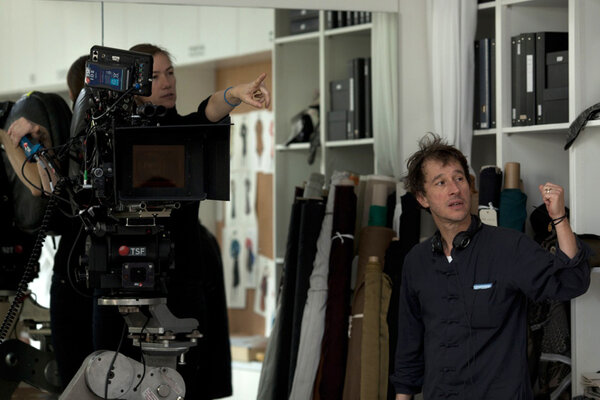Cinematographer Josée Deshaies talks about her work on "Saint Laurent", directed by Bertrand Bonello
Synopsis : A biopic focussing on Yves Saint Laurent in the years between 1965-1976. With Gaspard Uliel (Yves Saint Laurent), Jérémie Renier (Pierre Bergé), Léa Seydoux (Loulou de la Falaise), and Louis Garrel (Jacques de Bascher).

What medium did you choose and why ?
Josée Deshaies : Even when we first started writing the screenplay, 35mm was the obvious choice. When a director has that kind of certainty, it is easier to convince producers. We knew there would be concerns about the film ratio but in the end our calculations were accurate down to the meter. If the second take was good, Bertrand would stop there. That left us the ability to take ten or fifteen takes on other scenes. With a budget of seven million, the price difference between analog and digital is rather insignificant, but what you are left with is the excellent quality of the image.
How did you approach the biopic and how did you light it ?
JD : The film is set between 1967 and 1976. It is a pivotal period between the end of an era – at least for the French bourgeoisie – and the beginning of another. The very end of the film takes place twenty years later, at a time when the party is over and we are presented with an older Saint Laurent, tormented by his demons. In a last, operatic push, there is a replay of the most important moments of his life.
How to tell a life with lighting ? That was our question in a nutshell.
JD : I decided to highlight the three periods in Saint Laurent’s life by lighting them differently. The first part of the film focusses a lot on gestures, which always touches me in a movie. The gestures of real seamstresses but also of doctors, makeup artists, etc. For that, you have to have functional, soft, and directed lighting. One wants not to miss a single detail.
Then come the 70s and we switch to something more colourful because there was Morocco, disco, because Saint Laurent is at the height of his art in terms of materials, the arrangement of patterns, the movement of textures. We deployed baroque power. I used gelatins, coloured lights that were a bit more raw.
In the third part we discover, an older man, used up by excess. The atmosphere is more contrasted and darker. Somewhere, his inner light went out.
Did you shoot in studio ?
JD : No. For financial reasons and because Bertrand is not comfortable with the idea. Our production designer found two empty buildings in the 16th arrondissement in Paris. These places became our studios, with real windows, real hardwood floors.
It was difficult to work with the verticality of our “studios” and to make a 4th floor apartment look like a ground floor one. Setting up the 12kWs and the 18kWs to illuminate the windows every day, was a real logistical ballet ! I used the same material for the entire shoot, but I used it differently. I reflected it in the first part, I used it indirectly in the second by only using residual light, and used it directly in the last.
What about lenses ?
JD : I discovered Leica’s Sumilux. I tested the Master Primes and Ultra Primes but in the end, I preferred the results with the Sumilux. In addition, they combined well with the Angenieux Optimo zoom I chose to do Visconti-style intense zooms.
How did postproduction go ?
JD : On House of Tolerance, we had a 35mm copy. Three years later, we have no choice, we are required to have a DCP. I am still skeptical about this hybrid silver-process – digital chain. How can it benefit us without losing something at the same time ?
But as Pierre Bergé’s character says in the film : "Either you evolve or you die ! (Smile...)
The film was developed by Digimage but for co-production reasons, we colour timed it at Digital Factory. From the beginning, I wasn’t convinced by the LUT that was proposed because it stifled the negative. I tested several of them and finally I chose the basic Kodak LUT. The colour rendering was more accurate, the blacks were less muted. I often filtered while shooting to diffuse a bit in low lighting. Sometimes, that wasn’t enough so we also subtly filtered with a Lustre to soften the image while keeping shine and brilliance. Like glaze in a painting.
I like to think that Yves Saint Laurent would have appreciated the lengths we went to to create the visuals…
(Interview conducted by Brigitte Barbier for the AFC and translated from French by Alex Raiffe)
 En
En Fr
Fr





